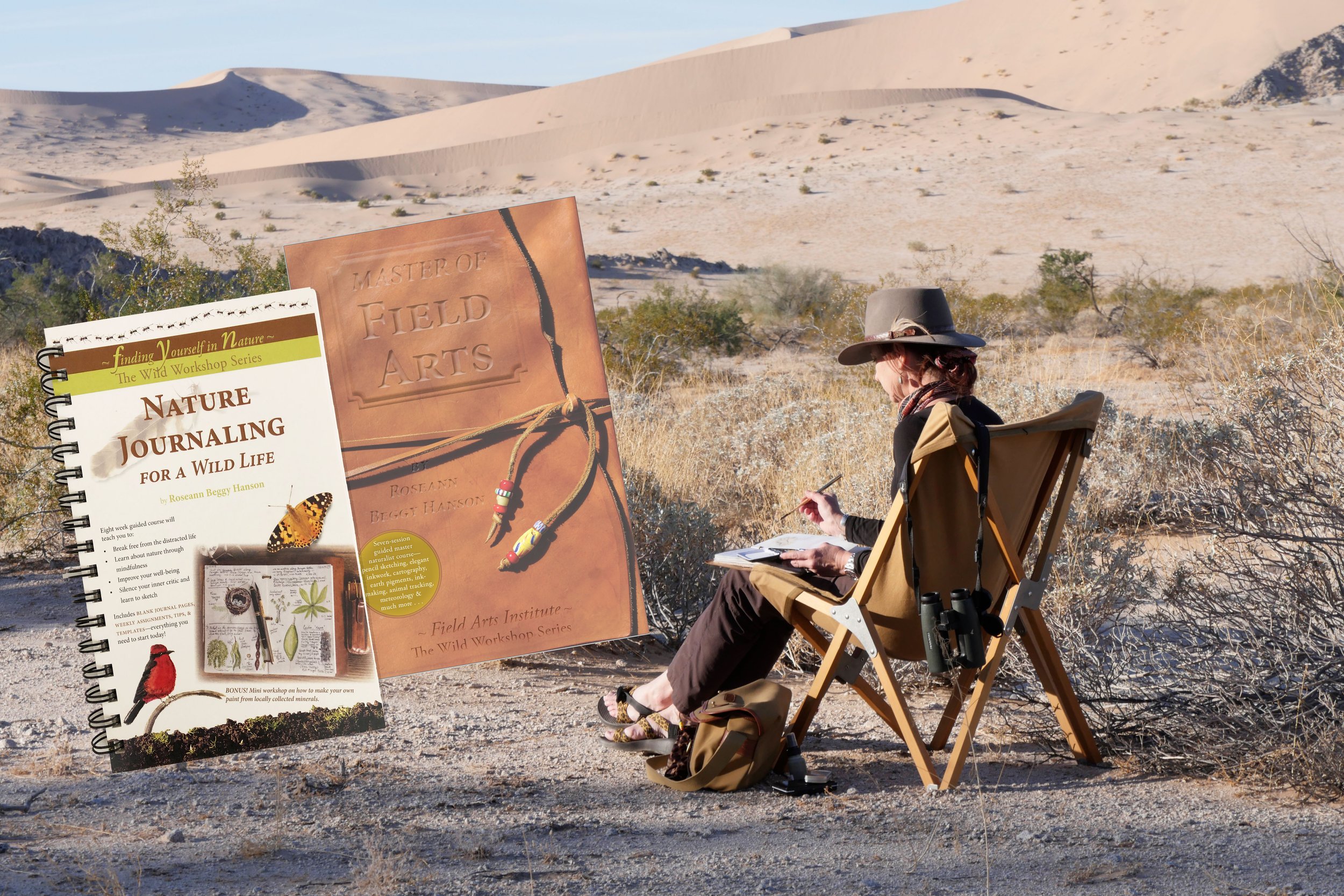A virtual field trip in June 2020.
In January 2020 I was in a planning meeting with colleagues at the University of Arizona’s Desert Laboratory on Tumamoc Hill, where I am coordinator for the Art and Science Program.
Someone suggested that we start offering online learning experiences, that it was the wave of the future for all universities (Biosphere 2 already has a robust, impressive lineup).
I smiled, noted the suggestion, and quickly changed the subject. I’ll admit to inwardly rolling my eyes and scoffing in disdain. Online? For nature-oriented learning? Our specialty is teaching science and art through direct field experiences. We teach field sketching, nature journaling, nature writing—all of which relies on being . . . in nature. Online is for people with no soul, no sense of reality, no adventure!
By the end of February I was just finishing up a new book, Nature Journaling for a Wild Life, which was all set to debut in the booth my husband and I have rented for several years at the Tucson Festival of Books in mid-March. We’ve written many books on natural history, outdoor adventure, and Southwestern short stories, and always do well at the festival and meet many readers and make new friends.
With this new book I was excited to sing the praises of learning to practice “intentional curiosity” as the core of nature journaling: to ask questions, to dig deeper, to focus one’s mind both intently and intentionally. In the book I suggest that we learn about nature by learning to see, not just look. By drawing to learn (not learning to draw), we also succeed in practicing a very satisfying and healing kind of meditation.
I had the booth prepped; new posters and promotions printed; talks planned; and looked forward to a busy summer already filled with sold-out nature workshops, events, and adventure guiding gigs . . . and then. COVID.
Cancellations. Lockdown. Income zero, overnight.
In the first month it was just pretty much being stunned, glued to the computer reading horror stories, watching our country fail.
But then a funny thing happened. My book sales took off. People were desperate for something to bring them inner peace, to take them away from these horrors.
Membership in the Facebook group The Nature Journal Club grew from 9,000 to 15,000 in just a month and a small group of us started offering fellow members Zoom “meet ups” to nature journal online. We had no idea what we were doing but just jumped in with crude tutorials and demonstrations. I figured out how to make a jive document camera with my iPad to demonstrate live sketching and watercolor.
Interest exploded. Soon our little club gatherings format was too small, so I started offering free online workshops on Zoom through my own business, the Field Arts Institute on our website, ExploringOverland.com.
Not happy with just “show and tell,” I started working with a friend who is the field program coordinator for Stanford University’s School of Earth Energy and Environmental Sciences. We developed a fun way to take our students on virtual field trips using the latest 360-degree viewer experiences either through university resources (ASU and University of Worcester in the UK have excellent ones) or the new Google Earth tours.
Ryan and I took students on field trips to Tuolumne Meadow in the Sierras and the Lake District National Park in northern England. Then Ryan got busy in his online teaching for Stanford, so I continued on my own and have since taken students on field sketching and nature journaling field trips to Sabino Canyon, the Dragoon Mountains, Yellowstone National Park, Botswana, Brazil, Alberta, and Australia.
As many as 150 people have registered for my virtual field trips, joining from all over the world. This never could happen in person—this meeting of like-minded people just for a morning, to enjoy a wild place together, learning about plants and geology and wildlife and conservation issues.
A group of 300 middle school students (four classes in one school) used my book, which I gave them free in PDF form, as their text book for the first virtual “BioArt” fusion class and it was a huge success: kids in Boston learning to sketch leaves and observe birds and ask questions about nature they never even thought about.
On Summer Solstice, a group of people in The Nature Journal Club even organized a global nature journaling event, with people from all corners of the earth measuring the sun’s arc throughout the day, sketching diagrams, and sharing them on Zoom the next day. We had a father and son in South Africa comparing their pages with a woman in Ontario, and a family in India showing their results in comparison to someone’s observations in Brisbane.
In July and early August I taught 30 people beginning nature journaling online through the Natural History Institute, with students from all four corners of the U.S.
I don’t think any of this would have come to pass if not for COVID.
And as much as I have come to love this global reach, there is one aspect I had not counted on that took me by surprised and brought me to tears. I had several people let me know that they loved the virtual field trips because they are disabled, and could never do these adventurous “hikes” and safaris in the reality that is their life.
And thus I’ve spun 180 degrees, and learned to not just accept teaching Nature in the Time of COVID, I now love it. I think it is here to stay, and I’m glad.
Will it replace in-person nature explorations? No, not a chance. And best of all I think it will encourage many thousands—hopefully tens of thousands—to learn to love nature, and that means more will want to see it protected. Mission accomplished.




